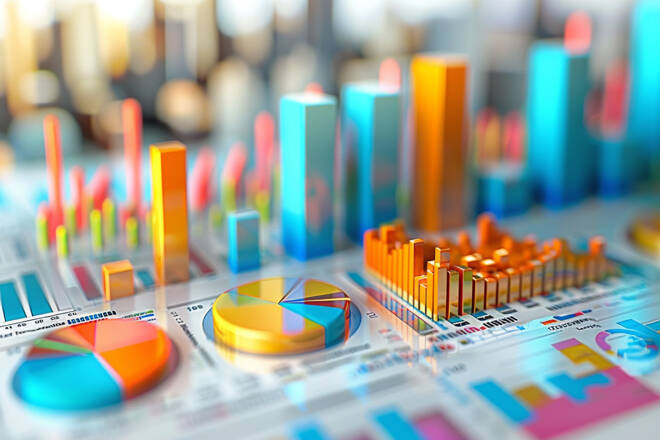Advertisement
Advertisement
US Economy Surges: Q2 GDP Hits 3.0%, Consumer Spending Booms, Job Market Strong
By:
Key Points:
- U.S. GDP growth accelerates to 3.0% in Q2 2024, surpassing initial estimates and showing economic resilience
- Consumer spending and private inventory investment drive GDP growth, offsetting residential investment decline
- Inflation moderates: PCE price index rises 2.5%, core PCE increases 2.8%, both revised slightly downwa
- Initial jobless claims fall to 231,000, beating forecasts and signaling continued labor market strength
Surging Ahead: GDP Expansion Beats Expectations
The U.S. economy shifted into high gear during the second quarter of 2024, with real GDP growth accelerating to an impressive 3.0% annual rate. This marks a significant uptick from the first quarter’s 1.4% growth and even surpasses the initial “advance” estimate of 2.8%. The robust performance was primarily driven by increases in consumer spending, private inventory investment, and nonresidential fixed investment.
Consumer Confidence Fuels Growth
The acceleration in GDP growth can be largely attributed to an upturn in private inventory investment and a notable acceleration in consumer spending. This surge in consumer activity suggests growing confidence in the economy and potentially bodes well for continued expansion in the coming quarters.
Inflation Remains a Concern
While growth figures paint a rosy picture, inflation indicators warrant attention. The price index for gross domestic purchases increased by 2.4%, slightly higher than previously estimated. The personal consumption expenditures (PCE) price index, a key inflation measure watched by the Federal Reserve, rose by 2.5%. Even when excluding volatile food and energy prices, the core PCE price index climbed 2.8%, indicating persistent inflationary pressures.
Mixed Signals in Personal Finance
Current-dollar personal income saw a substantial increase of $233.6 billion in Q2, with disposable personal income rising by 3.6%. However, when adjusted for inflation, real disposable personal income growth was more modest at 1.0%. The personal saving rate dipped to 3.3%, suggesting that consumers may be dipping into savings to fuel spending.
Corporate America: A Tale of Two Sectors
Corporate profits rebounded in Q2, increasing by $57.6 billion after a decline in Q1. Domestic financial corporations continued their upward trajectory, while nonfinancial corporations reversed their previous losses. However, profits from international operations saw a slight decline.
Job Market Remains Resilient Amid Economic Shifts
Unemployment Claims Edge Lower
In a sign of continued labor market strength, initial unemployment claims decreased to 231,000 for the week ending August 24. This figure, coming in below the forecasted 232,000, indicates that businesses are holding onto workers despite economic uncertainties.
Steady Unemployment Rate
The insured unemployment rate held steady at 1.2%, while the number of individuals receiving unemployment benefits saw a slight increase to 1,868,000. However, the four-week moving average of claims continued its downward trend, suggesting overall stability in the job market.
About the Author
James Hyerczykauthor
James Hyerczyk is a U.S. based seasoned technical analyst and educator with over 40 years of experience in market analysis and trading, specializing in chart patterns and price movement. He is the author of two books on technical analysis and has a background in both futures and stock markets.
Did you find this article useful?
Latest news and analysis
Advertisement
